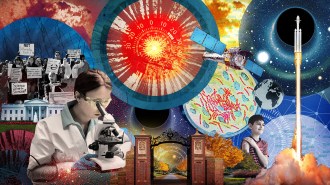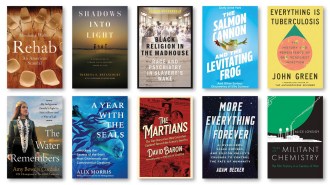The Smithsonian’s ‘Deep Time’ exhibit gives dinosaurs new life
Renovated fossil hall showcases ancient animals in their environments
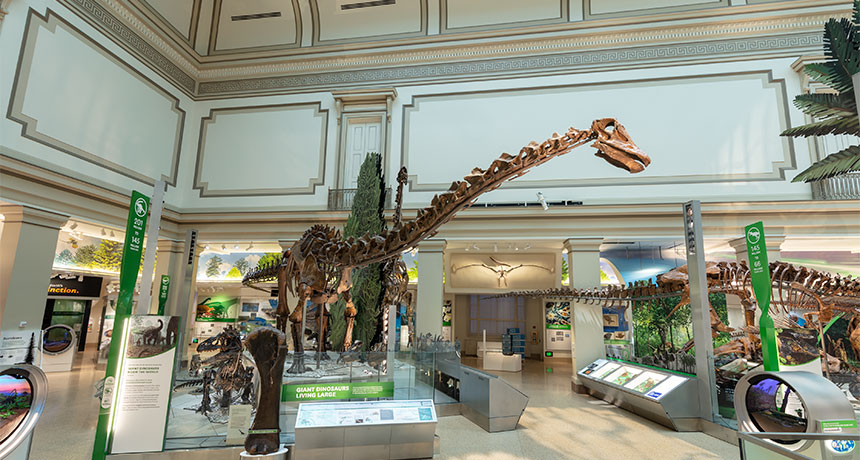
PREHISTORIC SCENE The Smithsonian’s updated fossil hall displays snapshots of the past, such as this Diplodocus reaching out to feed from a tree.
Lucia Martino, Smithsonian Institution
After five years, the Smithsonian National Museum of Natural History in Washington, D.C., is finally reopening its dinosaur hall on June 8. Visitors may come for fan favorites like Tyrannosaurus rex and Stegosaurus — and these fossils are gorgeously presented. But the new, permanent exhibition, the “David H. Koch Hall of Fossils — Deep Time,” has a much grander story to tell about the history of life on Earth, how organisms have interacted with each other for eons and how they’ve interacted with Earth and its climate.
Counterintuitively, the exhibition starts with humans.
Many exhibitions about the evolution of life tend to open with abstract concepts: the chemical formula for life or primordial microbes that lived in shallow seas. But the “Deep Time” designers wanted visitors to immediately feel their own part in the story, says exhibition project manager Siobhan Starrs. So the exhibition starts in the present and moves backward through time.
“The big, big starting point is that life is all connected, through billions of years of time,” she says. Scientists refer to that vastness of time on a geologic scale as deep time, a term suggesting a long, durable thread connecting the past to the present.
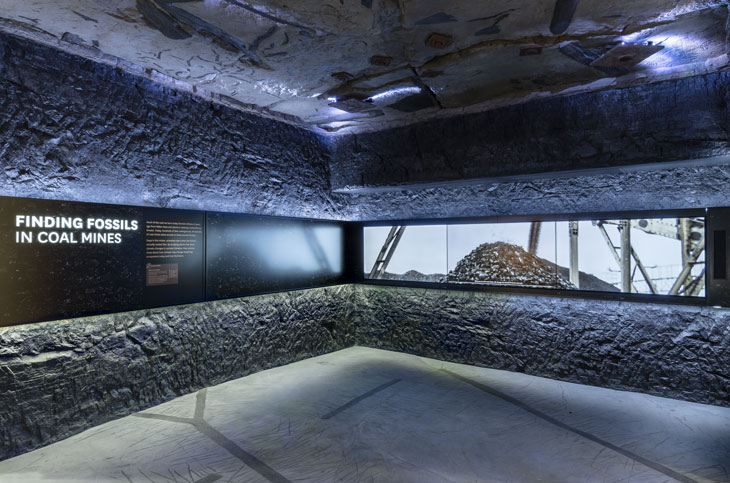
That sense of connectedness leads to another central theme: Putting life in context and moving beyond typical predator-prey scenes to give a better sense of the world in which creatures lived. Mixing fossils with other media, such as murals and statues, the exhibition depicts snapshots of life in the past. A woman gathers hickory nuts near a giant mastodon, while a saber-toothed tiger lurks nearby. A giant sloth with sheathed claws stretches up to snatch fruit from an orange tree. An Allosaurus curls its tail around a clutch of eggs.
Not all of the scenes are so peaceful: A T. rex chomping on a Triceratops, placing one foot firmly on the prey’s back to hold it in place, is sure to be a crowd-pleaser. But even that scene, Starrs notes, is meant to convey a more subtle story. Nearby, a shallow pond contains turtles, clams and mussels. “Even the T. rex had a context; it didn’t live in isolation.”
Deeper in time, visitors come to the story of plant evolution and the great swamp forests of the Carboniferous Period, about 359 million to 299 million years ago. One stunning section simulates discoveries made within a coal mine, with fossils of giant trees embedded in the ceiling and walls.
Using deep time as a framing concept “allows us to tell a story about changing ecosystems and changing environments through time, and how they interact with one another,” says Scott Wing, the museum’s curator of paleobotany. Compared with previous ways of presenting the history of life, he says, “it’s a profound shift in how we think about ourselves, and how we think about the natural world around us.”
The new exhibition is a big step forward from the previous fossil hall in other ways. For example, “Deep Time” includes a tribute of sorts to its predecessor, with a vertically mounted fossil of a Stegosaurus that had been embedded for decades in the museum’s floor. Scientists excavated the Stegosaurus and disassembled other long-displayed fossils and were once again able to examine the bones closely.
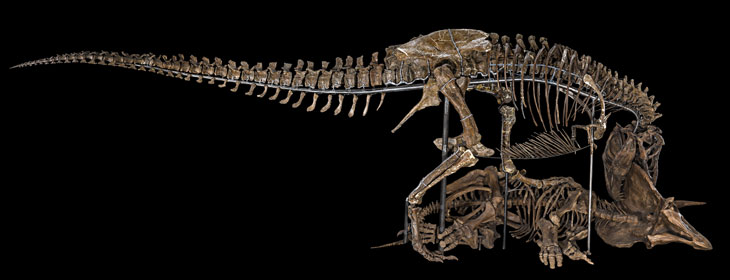
That led to some surprises, says dinosaur curator Matthew Carrano. Two different species of Camptosaurus once on display turned out to be the same species, he says. A Triceratops skeleton turned out to be a “Frankenfossil,” a mix of bits that weren’t all from Triceratops.
The exhibition’s final area returns to the present and looks toward the future, exploring interactions between Earth’s changing climate and the planet’s life-forms, as well as how human actions might further alter climate. That casting forward is another thing that sets the new exhibition apart, Starrs says. The hope is that after experiencing the fossil hall, “the visitor is now thinking on a deep time scale,” she says: Not just how humans might currently be altering Earth’s climate but also what legacy people will leave behind thousands or even millions of years into the future.






